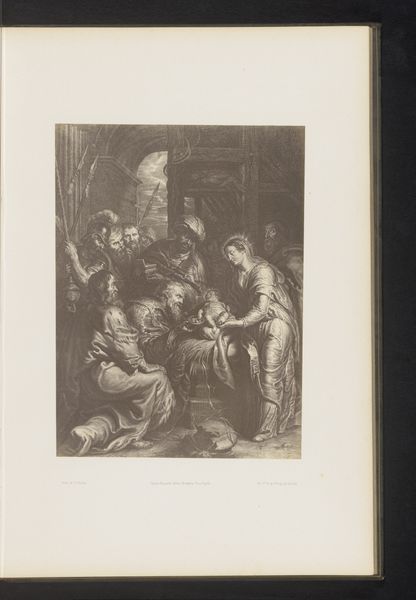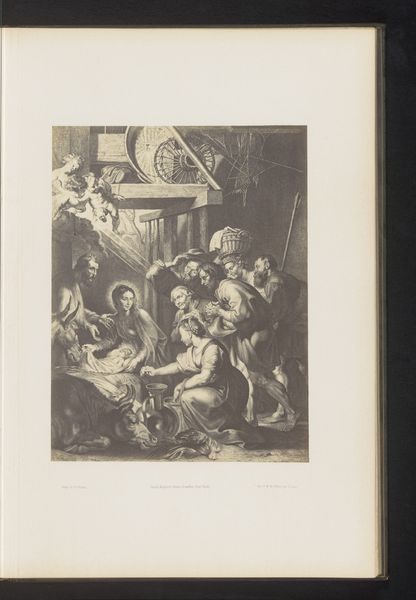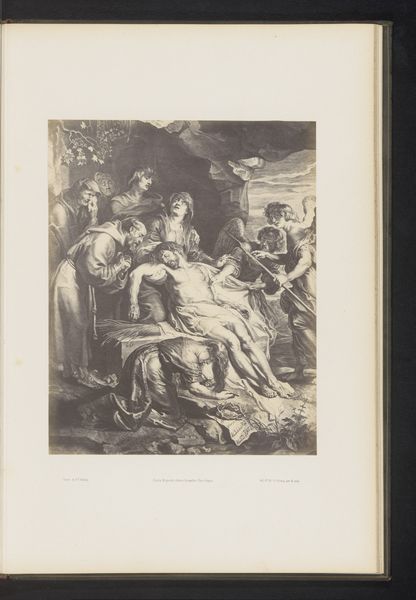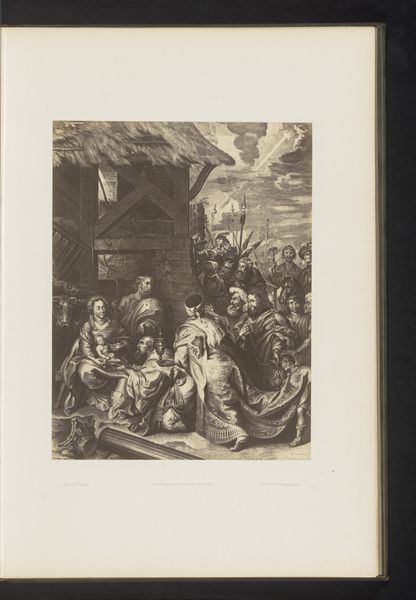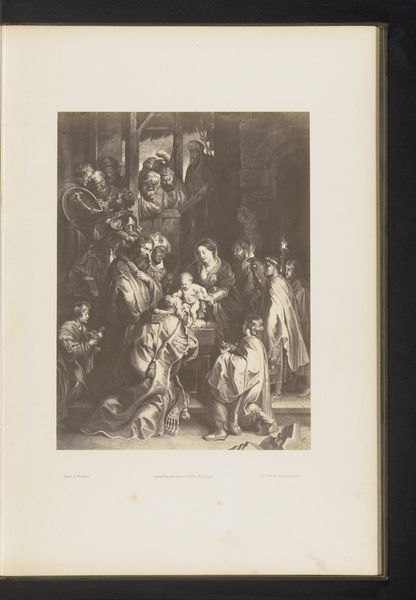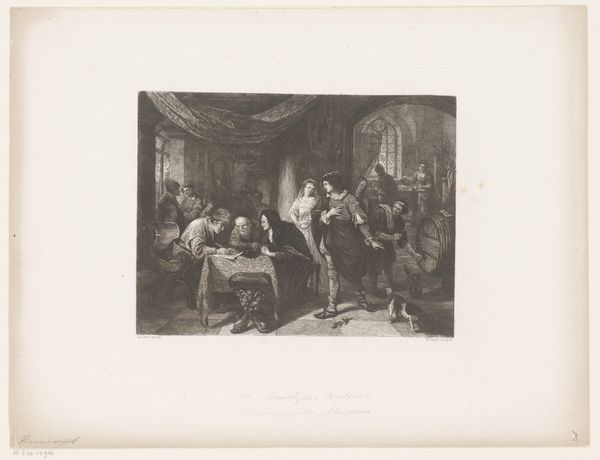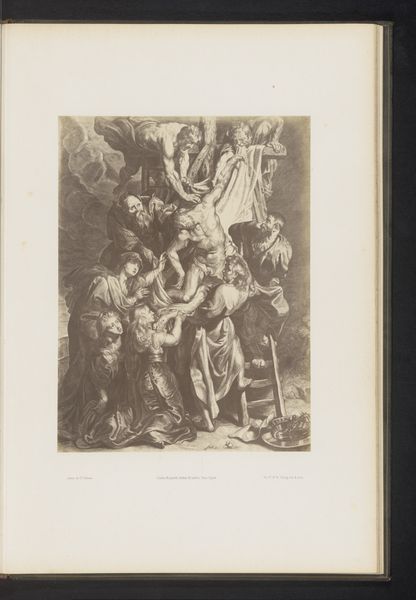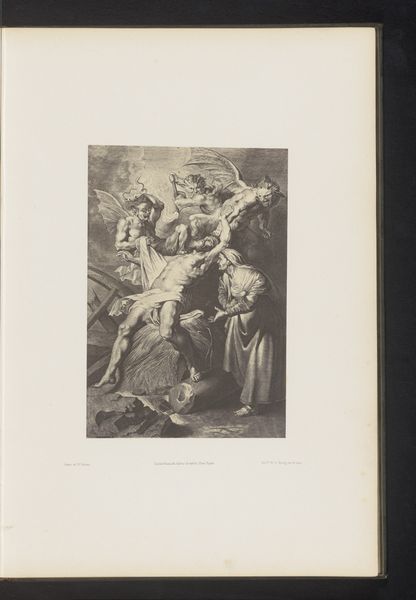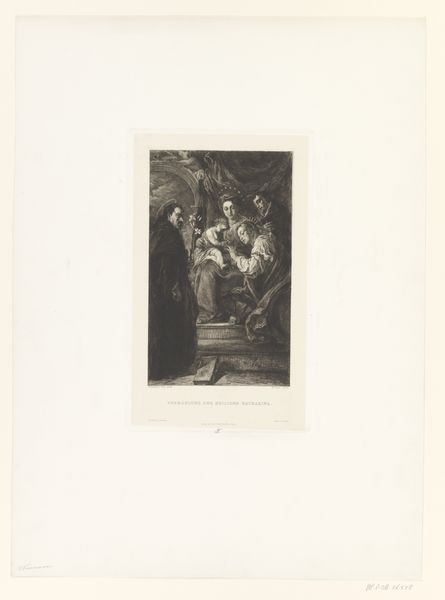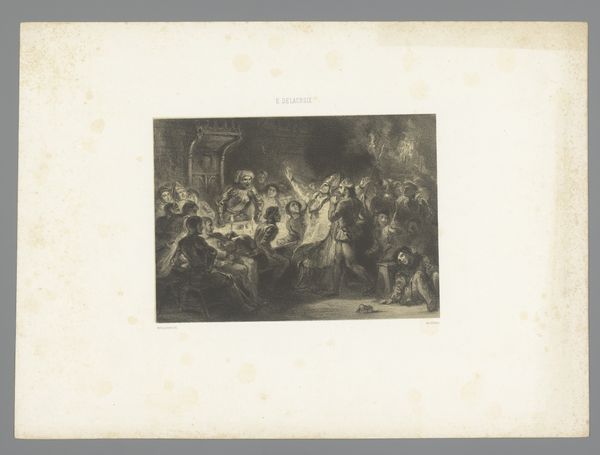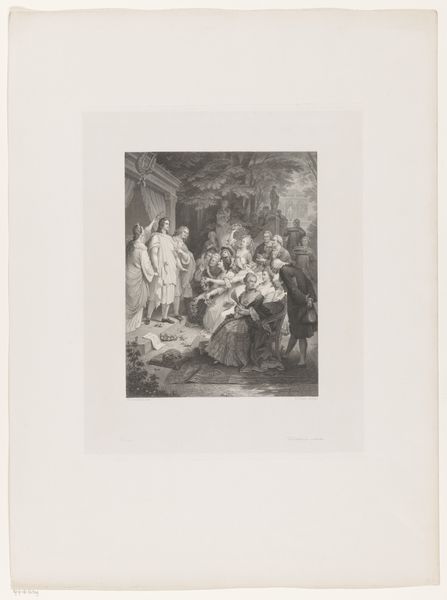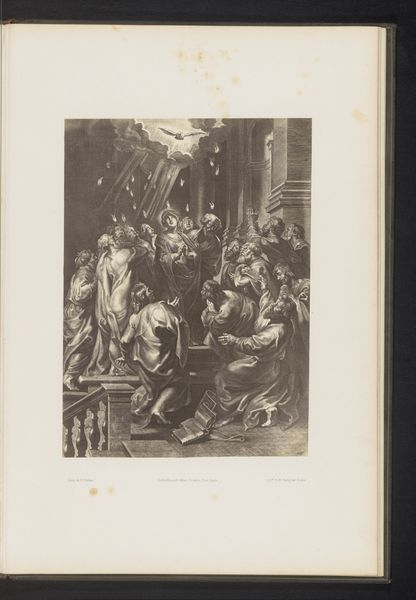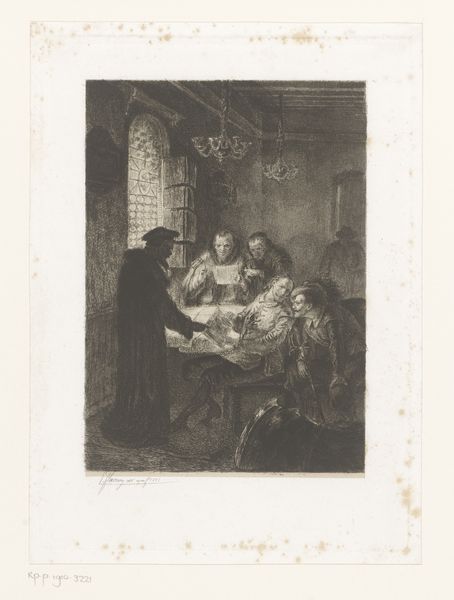
Fotoreproductie van een gravure van Het laatste avondmaal door Boëtius Adamsz. Bolswert, naar het schilderij door Peter Paul Rubens before 1858
0:00
0:00
Dimensions: height 307 mm, width 236 mm
Copyright: Rijks Museum: Open Domain
Editor: This engraving, a reproduction of Rubens' "Last Supper" by Boëtius Adamsz. Bolswert, captures a powerful scene in somber tones. What strikes me most is the staging, almost theatrical. What do you see in this piece, and how would you interpret it within its historical context? Curator: Beyond the immediate religious narrative, this print allows us to examine the social and political implications of image dissemination in the early modern period. The Baroque style itself was a tool, deployed to inspire awe and reaffirm religious power in the face of growing social unrest and shifts in theological thinking. This wasn't simply about portraying a biblical scene. It was about using the scene to reinforce particular power structures. How do you think the mass production of images like these impacted the accessibility and interpretation of religious narratives for diverse audiences? Editor: I guess it meant more people had access, but would those interpretations have been controlled in some way? Were some readings of this event deemed acceptable and others heretical? Curator: Precisely. While wider accessibility seems democratizing, remember the intense social control of the time. Consider how the depiction of gender, race, and class within this image reinforces or challenges existing hierarchies. Who is centered? Who is marginalized? Who gets to tell this story? What emotional responses are being carefully orchestrated here and why? Editor: So, it’s not just about the story of the Last Supper but also about power dynamics in the 17th century and beyond? Curator: Exactly. And that is still relevant today. Understanding that artistic depictions are always inflected with power means we must learn to read the cultural moment that created this artwork, which can inform us on issues that prevail in contemporary times. Editor: That’s given me so much more to think about regarding the piece; I had only considered the religious aspects. Curator: I'm glad! Engaging with art history through the lens of power and social structure enables a richer, more nuanced experience.
Comments
No comments
Be the first to comment and join the conversation on the ultimate creative platform.
